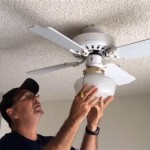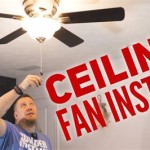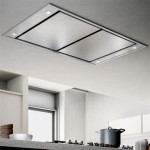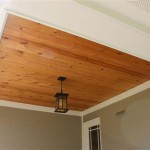How To Insulate A Ceiling: Step-by-Guided Notes Answer Key
Insulating a ceiling is a crucial step in improving a building's energy efficiency and overall comfort. Heat rises, and a poorly insulated ceiling allows significant heat loss during colder months and heat gain during warmer months. This article provides a comprehensive guide to insulating a ceiling, including key considerations and step-by-step instructions. It serves as an "answer key," providing detailed explanations and solutions to potential challenges encountered during the insulation process. This "answer key" format will specifically address common questions and concerns, acting as a detailed explanation for those following a set of guided notes on this topic.
Before commencing any insulation project, it's essential to understand the different types of insulation available and their suitability for ceilings. Common insulation materials include fiberglass batts and rolls, cellulose, spray foam, and rigid foam boards. Fiberglass is a cost-effective option, while cellulose is known for its recycled content and effective air sealing capabilities. Spray foam offers excellent insulation and air sealing properties but is typically more expensive and requires professional installation. Rigid foam boards are often used in basement ceilings or where space is limited.
The existing condition of the ceiling and attic space must also be assessed. Look for signs of water damage, leaks, mold, or pests. Addressing these issues before installing insulation is critical to prevent further problems and ensure the insulation's effectiveness. Proper ventilation in the attic is also vital to prevent moisture buildup and maintain a healthy indoor environment. If you are following guided notes, this initial assessment would be the first key element to address.
Key Point 1: Preparation and Safety Measures
Prior to installing insulation, adequate preparation and adherence to safety measures are mandatory. This includes gathering the necessary tools and materials, preparing the work area, and wearing appropriate personal protective equipment (PPE). The tools required typically include a utility knife, measuring tape, staple gun (if using faced insulation), dust mask, gloves, eye protection, and a ladder or scaffolding for reaching the ceiling.
Preparing the work area involves removing any existing debris or obstacles from the attic or ceiling space. If there’s old insulation, it may need to be removed and disposed of properly, especially if it is damaged or contaminated. Ensure there's adequate lighting in the work area to facilitate safe and efficient installation. Any electrical wiring or fixtures in the ceiling should be handled with extreme caution. Turn off the power to the circuit before working near electrical components and consult a qualified electrician if needed.
Safety is paramount during any insulation project. Wearing a dust mask or respirator is essential to prevent inhaling insulation fibers, which can irritate the lungs and respiratory system. Gloves protect skin from irritation caused by insulation materials. Eye protection, such as safety glasses or goggles, prevents insulation debris from entering the eyes. If working in a confined space, ensure adequate ventilation to minimize exposure to dust and fumes.
If the guided notes presented a question about the importance of PPE, the "answer key" would specify the need for a dust mask/respirator, gloves, and eye protection. Similarly, if the notes asked about preparing the workspace, the "answer key" would detail the processes of removing debris, ensuring adequate lighting, and handling electrical components safely.
Specific to fiberglass batts, it's recommended to wear long sleeves and pants to minimize skin contact. For spray foam, professional installation is highly recommended due to the potential health hazards associated with the chemicals used. If attempting DIY spray foam, follow the manufacturer's instructions meticulously and wear a full-face respirator and protective clothing.
Key Point 2: Installing Different Types of Insulation
The installation process varies depending on the type of insulation being used. Here's a detailed guide for installing common insulation materials: Fiberglass Batts and Rolls: Fiberglass batts and rolls are relatively easy to install. Measure the distance between the ceiling joists to determine the width of the batts needed. Cut the batts to fit the space, ensuring a snug fit without compressing the insulation. Faced batts have a paper or foil facing that acts as a vapor retarder. The facing should be installed facing the warm side of the ceiling (typically the living space). Staple the facing to the joists using a staple gun, making sure to overlap the facing on adjacent batts to create a continuous vapor barrier.
Unfaced batts do not have a vapor retarder and may require the installation of a separate vapor barrier if needed. In colder climates, a vapor barrier is typically recommended to prevent moisture from condensing within the insulation. When installing unfaced batts, ensure they are snugly fitted between the joists without gaps or compression. Rolls can be used to cover larger areas more quickly. Simply unroll the insulation and cut it to fit the space, following the same guidelines as for batts.
Cellulose: Cellulose insulation is typically blown into the ceiling cavity using a specialized blowing machine. This requires renting or purchasing the equipment and following the manufacturer's instructions carefully. Loose-fill cellulose is ideal for filling irregular spaces and providing excellent air sealing. The recommended depth of cellulose insulation depends on the desired R-value and the climate. Consult local building codes for specific requirements. When blowing cellulose, ensure that it is evenly distributed throughout the ceiling cavity and avoid over-compressing the insulation.
Spray Foam: Spray foam insulation is best installed by professionals due to the technical expertise and equipment required. Open-cell spray foam expands to fill the cavity and provides excellent air sealing, while closed-cell spray foam offers higher R-value and moisture resistance. The cost of spray foam is typically higher than other insulation materials, but the benefits of improved energy efficiency and air quality may outweigh the initial investment.
Rigid Foam Boards: Rigid foam boards are often used in basement ceilings or where space is limited. Cut the boards to fit the space and secure them to the ceiling joists using construction adhesive or screws. Seal the seams between the boards with tape to prevent air leakage. Rigid foam boards provide good insulation value but may require additional fireproofing depending on local building codes.
Following guided notes, this section would provide answers to specific prompts about each insulation type. For example, "What direction should the facing of fiberglass batts be installed?" Answer: "Facing should be installed facing the warm side of the ceiling." or "What equipment is needed to install cellulose insulation?" Answer: "Cellulose insulation is typically blown into the ceiling cavity using a specialized blowing machine."
Addressing any gaps or cracks in the ceiling before insulation is crucial. Use caulk or sealant to seal any air leaks around light fixtures, pipes, and other penetrations. This will help to prevent air infiltration and improve the insulation's effectiveness. Air sealing is particularly important in older homes with existing gaps and cracks.
Key Point 3: Addressing Common Challenges and Ensuring Proper Ventilation
During the insulation process, several challenges may arise. One common issue is dealing with recessed lighting fixtures (pot lights). These fixtures can generate heat and pose a fire hazard if covered with insulation. Use IC-rated (Insulation Contact) recessed lighting fixtures, which are designed to be covered with insulation. If non-IC-rated fixtures are present, create a fire-resistant barrier around the fixture using metal flashing or a commercially available recessed light cover. Maintain a safe distance between the insulation and the fixture to prevent overheating.
Another challenge is dealing with obstructions such as pipes and wiring. Carefully cut the insulation to fit around these obstructions, ensuring that the insulation is snug but not compressed. Use spray foam or caulk to seal any gaps around the obstructions. Avoid damaging the pipes or wiring during the insulation process. If necessary, consult a qualified plumber or electrician for assistance.
Proper ventilation is crucial for a healthy and energy-efficient home. Insulating a ceiling without addressing ventilation can lead to moisture buildup and mold growth. Ensure that the attic has adequate ventilation by installing soffit vents, ridge vents, gable vents, or a combination of these. Soffit vents allow air to enter the attic from the eaves, while ridge vents allow warm, moist air to escape from the peak of the roof. Gable vents provide cross-ventilation in the attic space.
The amount of ventilation required depends on the size of the attic and the climate. Consult local building codes for specific requirements. A general rule of thumb is to have one square foot of ventilation for every 300 square feet of attic space. Ensure that the vents are not blocked by insulation or debris. Regularly inspect the vents to ensure they are functioning properly. Installing baffles or vent chutes can help to maintain airflow from the soffit vents to the ridge vents and prevent insulation from blocking the vents.
If the guided notes presented a section on troubleshooting, the "answer key" would detail solutions to these challenges. For example, "What should be done with non-IC rated recessed lighting fixtures?" Answer: "Create a fire-resistant barrier around the fixture using metal flashing or a commercially available recessed light cover. Maintain a safe distance between the insulation and the fixture to prevent overheating." Or "What types of vents are commonly used in attics?" Answer: "Soffit vents, ridge vents, and gable vents are commonly used to provide adequate ventilation."
If the ceiling has cathedral or vaulted construction, the insulation process may be more complex. Cathedral ceilings often have limited space for insulation and require careful planning to ensure adequate insulation and ventilation. Rigid foam boards and spray foam are often used in cathedral ceilings due to their high R-value and ability to fit into tight spaces. Installing ventilation channels between the insulation and the roof deck is essential to prevent moisture buildup.
Carefully consider the environmental impact of the insulation materials. Opt for eco-friendly options such as recycled cellulose or sheep's wool insulation. Properly dispose of any waste materials generated during the insulation process. Recycle or reuse materials whenever possible to minimize environmental impact.
Following these steps and considerations will ensure a successful ceiling insulation project that improves energy efficiency, enhances comfort, and protects the building from moisture damage. Remember to consult local building codes and regulations to ensure compliance. When in doubt, seek professional assistance from a qualified insulation contractor.

Air Sealing And Insulating Ceilings In Vented Attics Building America Solution Center

Insulating Attics And Cathedral Ceilings Ted S Energy Tips

Best Spray Foam For Cathedral Ceilings

Air Sealing And Insulating Ceilings In Vented Attics Building America Solution Center

Insulating Attics And Cathedral Ceilings Ted S Energy Tips

Air Sealing And Insulating Ceilings In Vented Attics Building America Solution Center

Insulation Yourhome

Passive Porch Reno Part 3 Stonehaven Life

Home Improvement Insulate A Basement Faster Easier Safer Myfixituplife

The Benefits Of Insulating Your Attic Mr Handyman Memphis
Related Posts








